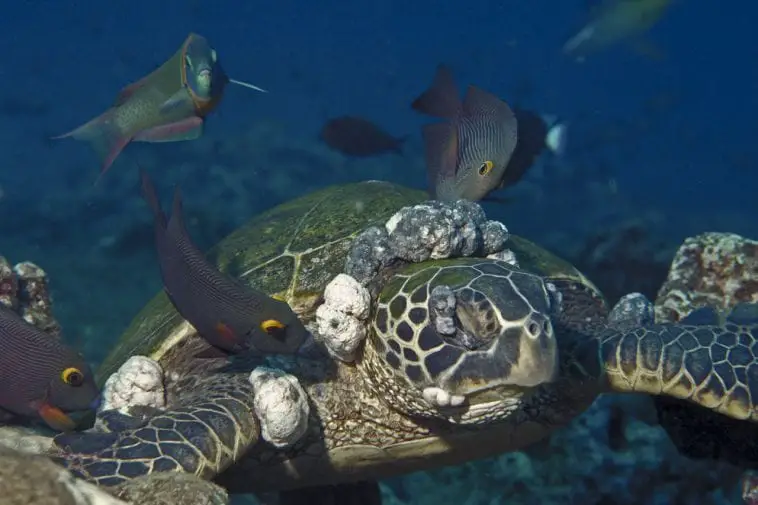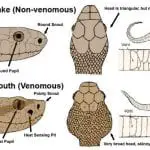Aquatic turtles are very popular creatures to be kept as pets. There are many species of these creatures that are beautifully colorful, intelligent, with great personalities, and modest in size. However, some interested keepers do not realize right away that caring for aquatic turtles is a long term commitment and responsibility.
When you care for pet aquatic turtles properly, these creatures can live for decades. But, they come with specific homing needs like appropriate water volume in large cages with clean and healthy water content. This type of maintenance can be tiring for some, and it might also need some aquatic turtles keepers to quit caring for them, surrendering them to the wild, and release them into the wild.
But, if you want to keep some aquatic turtles as your pet, you must know that they can become ill if you do not care for them properly. To check on this, it is important to have your turtle checked on by a veterinarian at least once a year. During the examination, you will be able to assess the current state of health of your aquatic turtle and figure out possible problems, treatments you can start with, and any modifications that you can do in your turtle’s husbandry.
Here are some diseases that aquatic turtles can possibly get.
Nutritional Health Concerns in Aquatic Turtles
1. Soft Shell Syndrome
Also known as nutritional secondary hyperparathyroidism, this illness is caused by an inadequate level of dietary calcium, a lack of ultraviolet light, excessive dietary phosphorous, and a lack of vitamin D. If this problem can be detected early, you can reserve this problem immediately through the use of proper lighting and proper diet. During treatment, you should improve the turtle’s diet by adding calcium, Vitamin D3, natural sunlight, and UVB artificial lighting.
2. Vitamin A Deficiency
This problem can be visually seen in turtles through swollen eyes. In the past, this problem usually arises with feeding turtles with only chicken, lettuce, insects, and beef without supplementation. This problem can generally be addressed by providing Vitamin A by prescription.
Infectious Diseases in Aquatic Turtles

Infections are very common in aquatic turtles. To understand more about this, you must know that organisms like bacteria and fungi are often part of the normal environment flora of turtles. Many of these bacteria are normally found in the mouth and digestive system of aquatic turtles. Sometimes, however, these organisms can enter the body of the turtles where these are not normally found, which leads to the development of an infection.
1. Shell Infections
Shell infections can range from very mild, superficial infections of the outer keratin layer, to osteomyelitis, which is a deep and severe infection seen on the bone of the shell. These infections can be seen by abnormal keratin sloughing, bleeding, the softness of the shell, bad odor, and discoloration. For some species of aquatic turtles, it is normal to see their shedding of the keratin scutes in the shell as the turtle matures.
2. Respiratory Infections
These problems can range from things as simple as sinus infections to life-threatening pneumonia in aquatic turtles.
3. Ear Infection
Also known as otitis, this infection causes the bulging of the tympanic membrane, which is normally found on the side of a turtle’s head.
Digestive System Infections
Infections of the digestive system, including parasitic infections, can often come up to the keeper’s attention after the turtle gets diarrhea or seeing blood in the turtle’s feces. Some internal parasites cause diseases like this that damages the digestive tract, kidneys, liver, and circulatory system of the turtle. The most common organisms are the worms called spirorchid trematodes and the protozoan called Entamoeba.
All of these infections are usually treated depending on which specific part of the body received the damage and how intense and severe the infection was. This is partnered with a complete physical examination, partnered with diagnostic testing so that the veterinarian can identify the specific disease and form the treatment program. Some common laboratory tests involve biopsies, bacterial cultures, fecal parasite analysis, and radiographs.
As a treatment, some would require receiving surgery so that the infected tissue can be removed. On the other hand, easier cases would require antibiotics, antifungals, or antiparasitics, which can be delivered orally, topically, through nebulizers, and through injectables.
Reproductive Diseases In Aquatic Turtles

1. Yolk coelomitis
Problems can also arise in the process of a turtle’s reproductive cycle. In this particular case, the follicles in the turtle might fail to ovulate, and instead, they become too enlarged. This phenomenon is called follicular statis. When these follicles start decomposing, the yolk material leaks inside the body of the turtle, and it leads to a condition called yolk coelomitis.
2. Egg Retention
In some cases, eggs that have developed full shells get retained for too long in the oviducts, where the eggs can become stuck for a long time. On rare occasions, the eggs can also get stuck in unusual areas of the body, like the urinal bladder and the colon. It can also become loose inside the body cavity of the turtle.
3. Penis Prolapse
This problem can sometimes be seen in spayed turtles. It generally appears like a fleshy structure extruding from the vent of a male turtle. If the extruding structure eventually retracts back to the vent, this means a normal turtle. But, some turtle penises can be traumatized during breeding attempts. Sometimes turtles try to copulate with anything that appears like a turtle, even a rock. If the penis does not retract, veterinary intervention must be needed.
Management of problems like this can be used to reduce any swelling, and surgery can also be required. For extreme problems, penis amputation can be performed if they cannot be salvaged. The procedure can make the turtle infertile, although if the testes have not been removed, then sperm production can continue. There are also cases that this happens to women, like oviduct prolapse. And for other turtles, it can be an intestinal prolapse.
Fortunately, both of these conditions can be managed well. Diagnosis methods have become more sophisticated over the years, and in many cases, it can be managed surgically and medically if the condition can be detected early enough. There are principles of minimally invasive surgery that can be applied to turtles and retained eggs, and problematic ovaries can be removed if the situation calls for it.
Trauma in Aquatic Turtles
Turtle shells can be damaged by a larger animal, like a dog. It can also be hurt by accidents caused by vehicles or machinery like lawnmowers. If your pet turtle becomes a victim of trauma, there might be a need for euthanasia. But, in some cases, the problem can be solved with various shell repair techniques. These shell repair techniques can be studied in veterinary and rehabilitation conferences, which is why most veterinarians can provide these services.
Aside from trauma, turtles also deal with serious problems like severe pain, blood loss, low heart rate, and others. This just means that when a turtle encounters trauma, trauma patients must be managed thoroughly.
Foreign Bodies in Aquatic Turtles

As turtles are very curious species, they have the tendency to wrongly ingest anything that is small enough for them to attempt to eat. Once these items are ingested, items that are not food items are also tagged as foreign bodies.
If the turtle is fairly relative to the size of the object, the foreign matter can pass through the digestive system without having to undergo any form of incident. But if the object is too large or too heavy, they may become trapped in the digestive system, which will cause an obstruction. Obstructions can become life-threatening over time, but if it is detected soon enough, the patient can often be successfully managed by surgery and endoscopy.
A common foreign object involved is fish hooks. While it can be unusual for a turtle to consume this, most aquatic turtles found in rehabilitation centers are seen as having hooks inside their body. The outcome of hook ingestion can be very variable, and it is dependent on the type of the hook, the location it got stuck in the body, and whether a fishing line is attached to the hook.
In simple cases, a single hook can be presented in the mouth, where it can easily be removed. In some complicated cases, the hook can be lodged deep in the turtle’s esophagus near its heart. The management for this type of problem is different on a case to case basis, and the veterinarian will have the power to decide on the course of treatment per case.
Final Thoughts
Aquatic turtles, no matter how well you take care of them, are still susceptible to have intense health problems. You can help your aquatic turtle maintain the best of health. It is important that you thoroughly research the right husbandry actions so that the risk of disease can be immensely minimized. It is important that turtle keepers familiarize themselves with the first signs of illness, as early detection can make the treatment process faster and maintain the health of your turtle.



